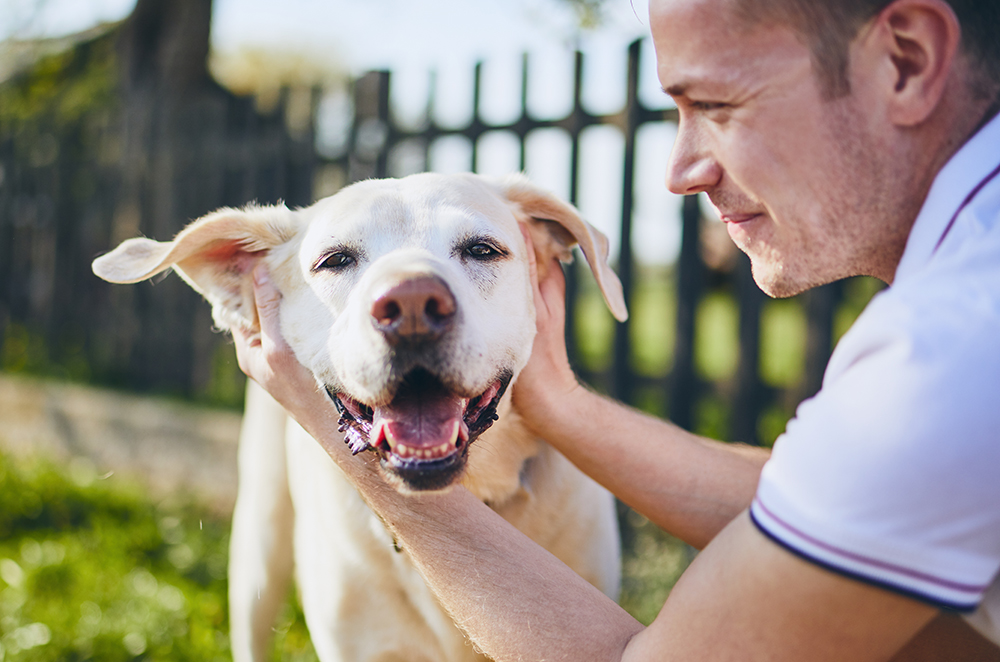As a dog owner, one of the most important decisions you will make is choosing the right fence for your yard. While fences may seem like a simple home improvement project, getting it right is crucial for ensuring your dog’s safety and happiness. An improperly contained yard could result in heartbreak and tragedy if your furry friend escapes and gets lost or hurt. However, with the vast array of fencing options on the market today, making the choice that best suits your needs and budget can feel overwhelming. In this post, we break down the key factors to consider and demystify the fencing selection process.
Types of Fences for Dogs
When it comes to selecting the optimal fence for your dog, the choices may appear boundless. However, in general, there are four primary types of fences: privacy, chain link, and invisible electric. Your selection will largely depend on the boundaries you wish to establish, the size of your area, and the specific breed of your canine companion.
Privacy
Privacy fences, as their name implies, provide the utmost seclusion from the outside world. They prove especially beneficial for households with barking pets easily triggered by passersby or small critters scurrying about in the yard. Moreover, these fences, usually constructed of wood or vinyl, boast exceptional durability—a crucial feature for dogs with a penchant for chewing.
Privacy fences come in various heights, typically ranging from 4 to 8 feet. If you have a small dog that isn’t prone to jumping, a privacy fence can be an excellent choice. However, if your pup enjoys scaling heights, it would be wise to opt for a taller option, such as an 8-foot fence.
Chain Link
Chain-link fences are a preferred option among pet owners due to their affordability, minimal upkeep, and adaptability to various spaces. They are particularly suitable for dogs with a penchant for digging, as the narrow slat gaps effectively discourage any attempts to squeeze through.
Chain-link fences consist of metal and feature small, interlocking components that form a mesh-like surface. If your dog has a tendency to bark or jump, it’s worth considering alternative fencing options as chain-link or slat fences provide minimal acoustic or visual barriers.
Invisible Electric
An invisible electric fence consists of an underground wire and a collar worn by your dog. If your pet crosses the boundary you’ve set, the collar emits a harmless static correction. It’s important to note that while the fence keeps your pup from getting out, it doesn’t prevent other animals from entering, as there is no visual or physical barrier.
Factors to Consider When Selecting the Ideal Fences for Dogs
Once you’ve become acquainted with the various kinds of fences at your disposal, it’s time to consider which one would be most suitable for your furry friend. It’s important to have an innovative and personalized boundary solution that caters to your pet’s specific requirements. To assist you in getting started, here are a few key points to bear in mind.
Height
When selecting a fence for your dog, the first aspect to consider is its height. The fence should be sufficiently tall to discourage your dog from attempting to jump over it and escape. If you own a small dog that isn’t prone to jumping, a fence standing at 3 to 4 feet high might suffice. However, larger breeds will necessitate a fence that is at least 6 feet tall.
If your dog is a skilled jumper, simply increasing the height of the fence may not suffice to keep it contained. In such instances, a touch of creativity is required. Some pet owners opt to incorporate a lattice or trellis at the top of the fence, effectively raising the difficulty level for their dog to scale it.
Material
When it comes to ensuring the security of your furry friend, durability is key. The material used for your fence will greatly affect its longevity, resilience against the elements, and ability to contain your pup effectively.
Wooden fences provide both strength and privacy. However, they are vulnerable to issues such as rot, termites, and other pests. Additionally, since they are not buried underground, they do not effectively contain a dog that is prone to digging and escaping.
Metal fences, especially chain link ones, offer excellent durability and minimal maintenance. Although they are sturdy enough to deter large dogs from breaking or chewing through, the gaps in the fence can serve as an easy escape route for small dogs and puppies.
Vinyl is a favored choice for fencing due to its strength, durability, and low-maintenance nature. Additionally, its smooth surface acts as a deterrent for dogs attempting to climb over. However, it’s important to note that with time, vinyl can become brittle and may crack or break if subjected to excessive force from your dog’s leaning or jumping.
Installation and Maintenance
The installation procedure for your fence may differ based on the type of fencing you select. Professional installation is typically required for wooden, metal, and vinyl fences, as they are considered permanent solutions. Once the fence is in place, it will endure for years with minimal upkeep. When it comes to maintenance, both wood and metal fences require repainting or resealing every few years to shield them from the elements. On the other hand, vinyl fences are nearly maintenance-free, although they may experience fading over time when exposed to direct sunlight.
FAQs
Naturally, there are numerous concerns associated with allowing your dog to roam freely, even within the boundaries of your own yard. Whether you’re considering an invisible fence or a physical enclosure, it is crucial to familiarize yourself with the most effective methods of ensuring your furry friend’s safety. Below, we have addressed some of the most commonly asked questions regarding physical dog fences.
Q: What is the optimal height for a dog fence?
A fence that is 3 to 4 feet high is typically suitable for small dogs. However, for larger dogs with exceptional jumping abilities, taller fences ranging from 6 to 8 feet are recommended for enhanced effectiveness.
Q: What type of fence is the most durable for dogs?
Vinyl, wood, and metal are all excellent choices for durable dog fences. However, when it comes to withstanding the harshest elements, metal is the ultimate option.
Q: Which type of fence is the most economical for containing dogs?
Vinyl fencing is often the most cost-effective choice for dog fences.
Q: How can I prevent a dog from escaping through a fence?
To prevent a dog from breaching a fence, it is crucial to ensure that the fence is sufficiently tall and constructed using durable materials. Consider augmenting the fence’s defense by incorporating an extra barrier, such as chicken wire, at its base. This additional measure will effectively reinforce the overall security and containment of the fenced area.
Dog Fencing by Fence Builders Inc.
If you’re searching for a custom and secure fencing solution for your pet, Fence Builders Inc. has got you covered. With over 60 years of experience in the fencing industry, we provide top-quality fence installation services that cater to all your dog’s needs. Our team of experts can help you select the ideal fencing option for your furry friend, ensuring their safety while also enhancing the aesthetic appeal of your yard. Contact us today to learn more!
Fence Builders Inc. is currently running winter specials on all of our product lines. For more information, please reach out to your sales representative. The availability of the offer is subject to project details and size, and it will be valid until the end of February. Don’t miss out on the opportunity and book now for your winter projects!

